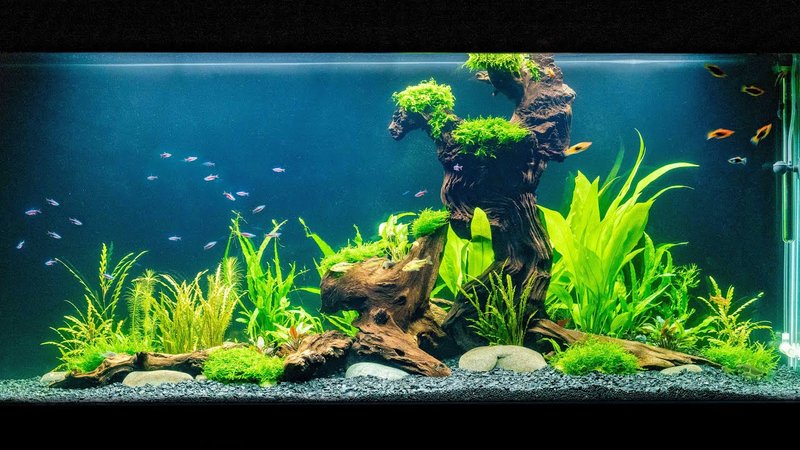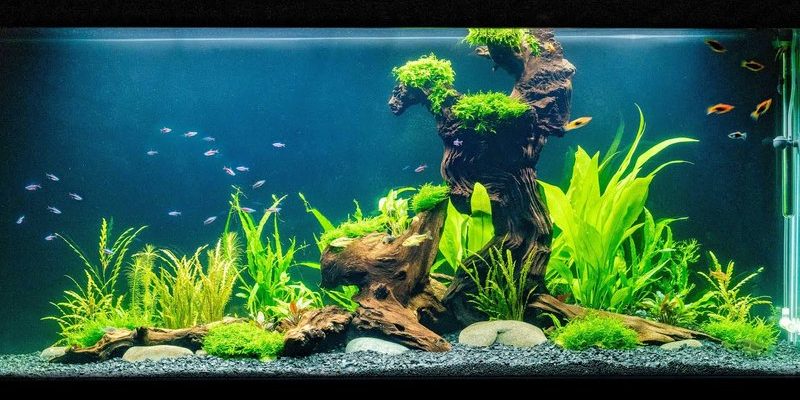
The journey may seem daunting at first, but it’s a lot like assembling a puzzle. Each piece has its place, and once you figure it out, the end result is incredibly satisfying. So, grab a cup of coffee, sit back, and let’s go through the step-by-step process of setting up your own freshwater aquarium.
Choosing the Right Aquarium Size
When you’re starting, the first thing to consider is the size of your aquarium. It might seem like a simple decision, but the size you choose will affect everything from the type of fish you can keep to how much maintenance you’ll need to do. A smaller tank may look adorable on your desk, but it can be trickier to maintain since the water conditions change quickly.
Generally, if you’re a beginner, I’d recommend starting with at least a 20-gallon tank. This size offers more stability in water conditions and gives you a wider variety of fish to choose from. Plus, larger tanks can be more forgiving if you forget to do a water change here and there.
Consider Space and Aesthetics
Think about where you want to place your aquarium. A good spot is away from direct sunlight to prevent rapid algae growth. Also, consider the furniture around it. A sturdy stand designed for aquariums is essential for supporting the weight of the tank, as even a smaller 20-gallon aquarium can weigh over 200 pounds when filled.
You might want to give some thought to the overall look, too. Are you aiming for a natural riverbed vibe, or do you prefer a more modern, minimalist style? Picking the right size and location sets a solid foundation for everything that comes next.
Gathering Essential Equipment
Now that you’ve chosen your tank, it’s time to gather the necessary equipment. Here’s a quick list of what you’ll need to get started:
- Filter: To keep the water clean and well-oxygenated.
- Heater: Important if you’re keeping tropical fish.
- Lighting: LEDs work well for both fish and plants.
- Substrate: Gravel or sand for the bottom of the tank.
- Decorations: Plants, rocks, or driftwood to create hiding spots.
Each piece of equipment plays a crucial role in maintaining a healthy ecosystem. For instance, a good filter not only cleans the water but also promotes beneficial bacteria growth, which helps break down waste.
Investing in Quality Gear
It’s tempting to skimp on equipment, but think of it as investing in the health of your aquarium. A quality heater, for example, will provide more stable temperatures, keeping your fish happy and stress-free. When choosing equipment, check for reviews and consider brands that have a good reputation for reliability.
Also, don’t forget the essentials like a water conditioner to remove chlorine and a testing kit to keep track of ammonia, nitrite, and pH levels. These little things can save you a lot of headache down the line.
Setting Up the Tank: Step by Step
With your aquarium size and equipment in hand, it’s finally time to set things up! Here’s how you can do it step by step:
1. Wash Your Tank: Rinse the tank with water (no soap). You want to remove any dust or residues without introducing harmful chemicals.
2. Add Substrate: Pour your substrate into the bottom of the tank to a depth of about 1-2 inches. Rinse it first to clear away any dust.
3. Install Equipment: Set up the filter and heater. Position the filter according to the manufacturer’s guidelines to ensure it functions properly.
4. Decorate: This is where you can unleash your creativity! Arrange plants and decorations to create hiding spots for your fish. Just remember to leave enough open swimming space.
5. Fill with Water: Slowly fill your tank with dechlorinated water to avoid disturbing the substrate. A clean plate can help disperse the water gently.
Making It Cozy for Fish
Once the tank is filled, plug in the heater and filter. It’s a good idea to let your aquarium run for at least 24 hours to stabilize the temperature and ensure everything is working correctly. You might be wondering about plants—live plants can enhance the aesthetics while benefiting the water quality, but they require a little more care than plastic ones.
Now is a great time to set your lights on a timer, too. A cycle of 8-12 hours of light each day creates a natural environment for fish and plants alike.
Cycling the Aquarium
Before adding any fish, you need to cycle your aquarium. Cycling is the process of establishing beneficial bacteria that break down waste compounds in the water. You can’t skip this step—it’s crucial for your fish’s health.
There are two primary methods to cycle your tank: fishless cycling (using ammonia to jumpstart the bacteria growth) or cycling with fish (which is less ideal, but possible).
In a fishless cycle, you can simply add a few drops of ammonia to the tank daily until ammonia and nitrite levels stabilize, indicating that the beneficial bacteria have grown. Don’t worry; this process usually takes anywhere from 4 to 6 weeks.
Signs of a Healthy Cycle
You’ll know your aquarium is cycled when:
– Ammonia levels drop to zero.
– Nitrites rise and then drop to zero.
– Nitrates start to form.
Regular testing with a reliable kit will help you monitor these changes. During this time, you might feel anxious about the empty tank—but patience is key here!
Choosing Fish for Your Freshwater Aquarium
Once your tank is cycled, it’s time to pick out fish! But this can be a bit overwhelming with so many choices. It’s important to choose species that are compatible with each other.
Start with hardy fish like tetras, guppies, or bettas, as they tend to adapt well to new environments. Aim to add fish gradually, about 1-2 at a time, to avoid overloading the filter and disturbing the balance.
Also, think about the size of the fish when mature. If your tank is small, a large fish might not be the best choice. A good rule of thumb is to keep 1 inch of fish per gallon of water.
Creating Harmonious Communities
Fish are social creatures, and some species thrive better in groups. For instance, schools of tetras will be happier together. You might want to do a little research on each species you’re considering to make sure they’ll get along.
When stocking your tank, be mindful of their social structures. Some fish are territorial and may require more space or hiding spots. It’s all about creating a peaceful aquarium where everyone can thrive.
Maintaining Your Freshwater Aquarium
Setting up your aquarium is just the first step; regular maintenance keeps it healthy and beautiful. Here are some key tasks to add to your routine:
– Water Changes: Aim for 10-20% water changes weekly. Use a siphon to vacuum debris from the substrate while replacing the old water with fresh, dechlorinated water.
– Test Water Parameters: Regularly check ammonia, nitrite, nitrate, and pH levels. This helps catch any issues early before they affect your fish.
– Filter Maintenance: Clean your filter according to the manufacturer’s instructions—usually every few weeks—but avoid overcleaning, as you don’t want to remove beneficial bacteria.
Understanding Common Issues
Even the best-maintained aquariums can experience hiccups. Watch for signs of stress in your fish, like rapid gill movement or lack of appetite. If you notice cloudy water or algae blooms, these often indicate an imbalance that can usually be remedied with a water change or adjusting the lighting.
If you encounter consistent problems, consider reaching out to local fishkeeping communities or online forums. They can be a great resource for troubleshooting common aquarium issues.
Setting up a freshwater aquarium isn’t just a task; it’s the start of a rewarding hobby. With the right setup, patience, and love, you can create a thriving aquatic environment that brings joy and tranquility to your space.
Remember, every tank is a unique little world where you can learn, experiment, and watch nature at work. Fishkeeping may have its ups and downs, but the peace of watching your fish swim around makes it all worth it. So take your time, enjoy the process, and soon enough, you’ll find yourself immersed in the beauty of your very own underwater paradise.

